Abstract
The effects of 6-mercaptopurine (7·5 mg/kg) and cyclophosphamide (15 mg/kg and 30 mg/kg) on various aspects of the immune response have been compared in New Zealand Black (NZB) mice. Injections were given daily for 5–8 weeks. Serologic and morphologic studies during and after treatment revealed the following: (1) 6-MP decreased the levels of circulating polymorphonuclear leucocytes, monocytes, and large lymphocytes; small and medium lymphocyte counts remained unchanged. In contrast, cyclophosphamide decreased mainly the small and medium lymphocytes, leaving the other cell types unchanged. (2) In older animals, 6-MP produced a marked fall in haematocrit, while cyclophosphamide did not do so. (3) Cyclophosphamide delayed the onset of Coombs positivity and decreased the Coombs antibody titre. It also decreased immunofluorescent staining of γ-globulin deposits in the kidney. 6-MP had no such effects.
The results suggest that 6-MP exerted an anti-proliferative action on the bone marrow, as shown by a decrease of short-lived cells in the blood. Cyclophosphamide, on the other hand, appeared to have mainly a cytotoxic effect on circulating cells, resulting in depletion of the long-lived small lymphocytes of the blood and leading to inhibition of autoantibody formation and immune complex deposition in the kidney. Cyclophosphamide would, therefore, appear to be the preferable drug where suppression of ongoing cellular and humoral immune reactions is desirable.
Full text
PDF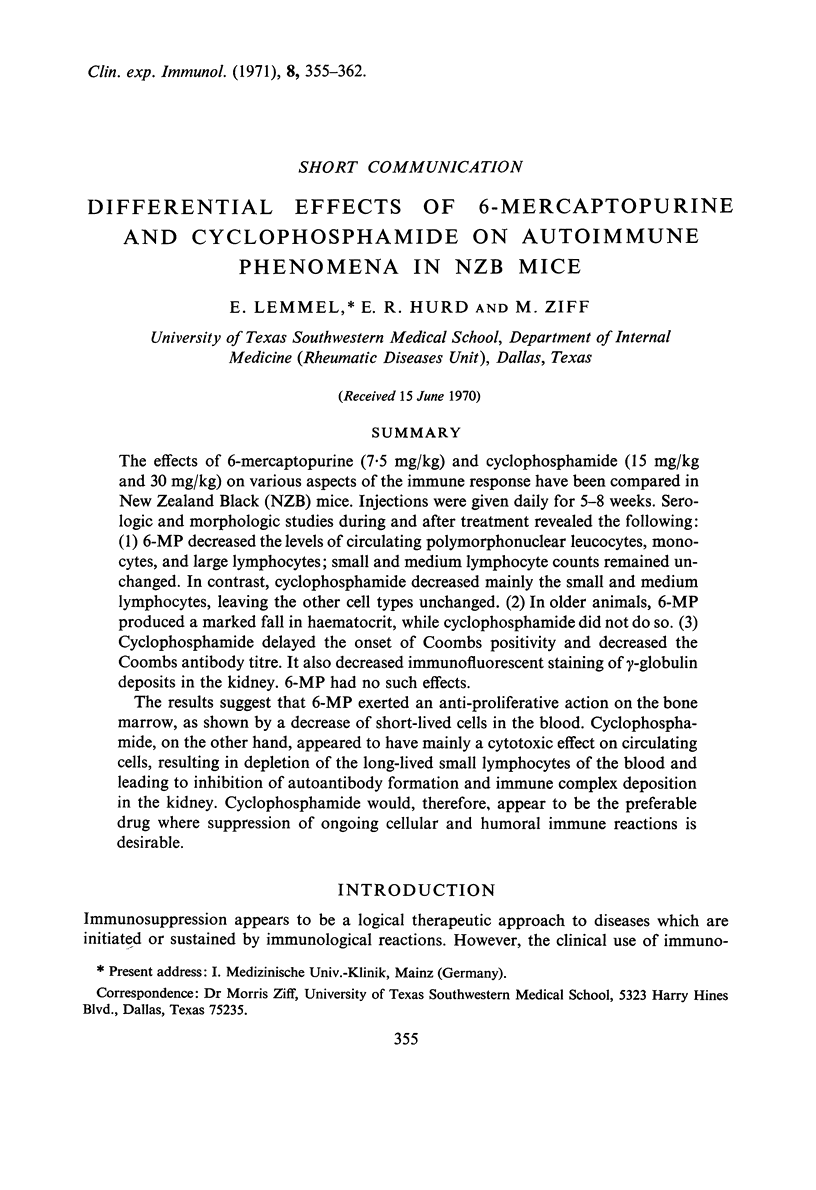
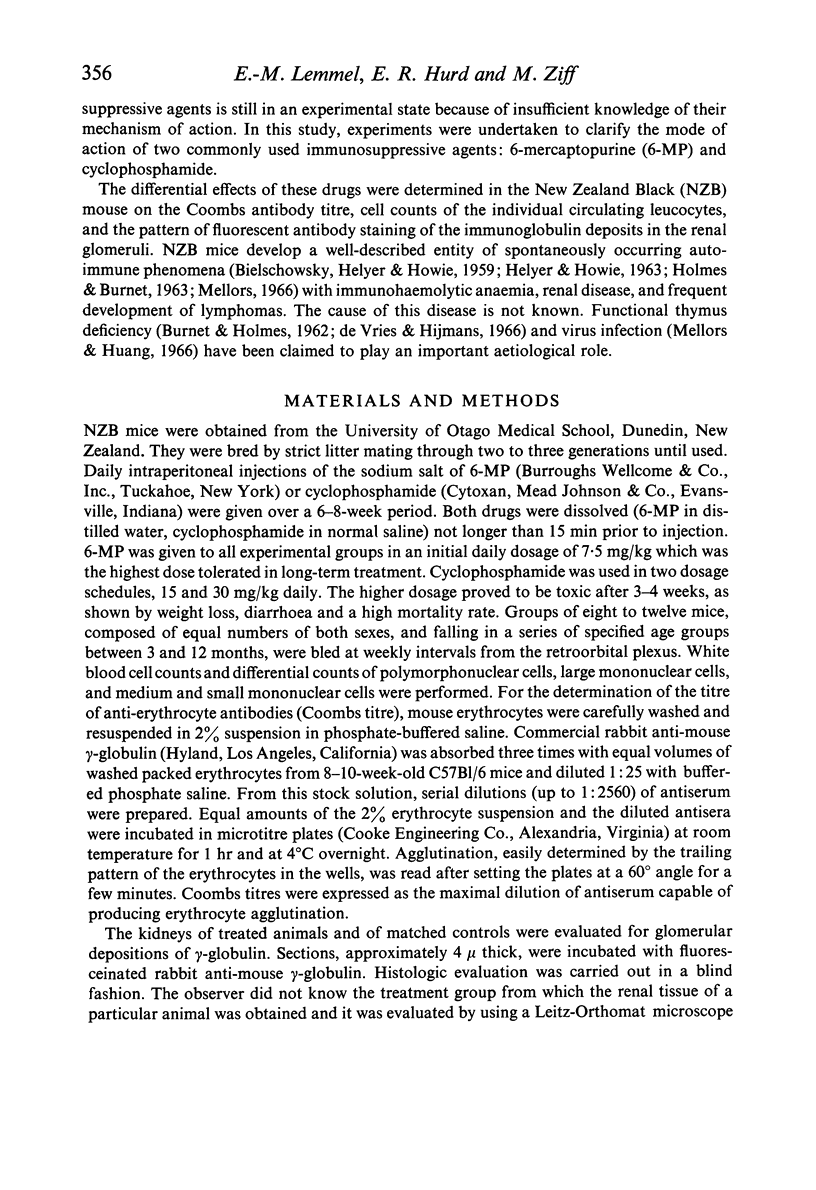
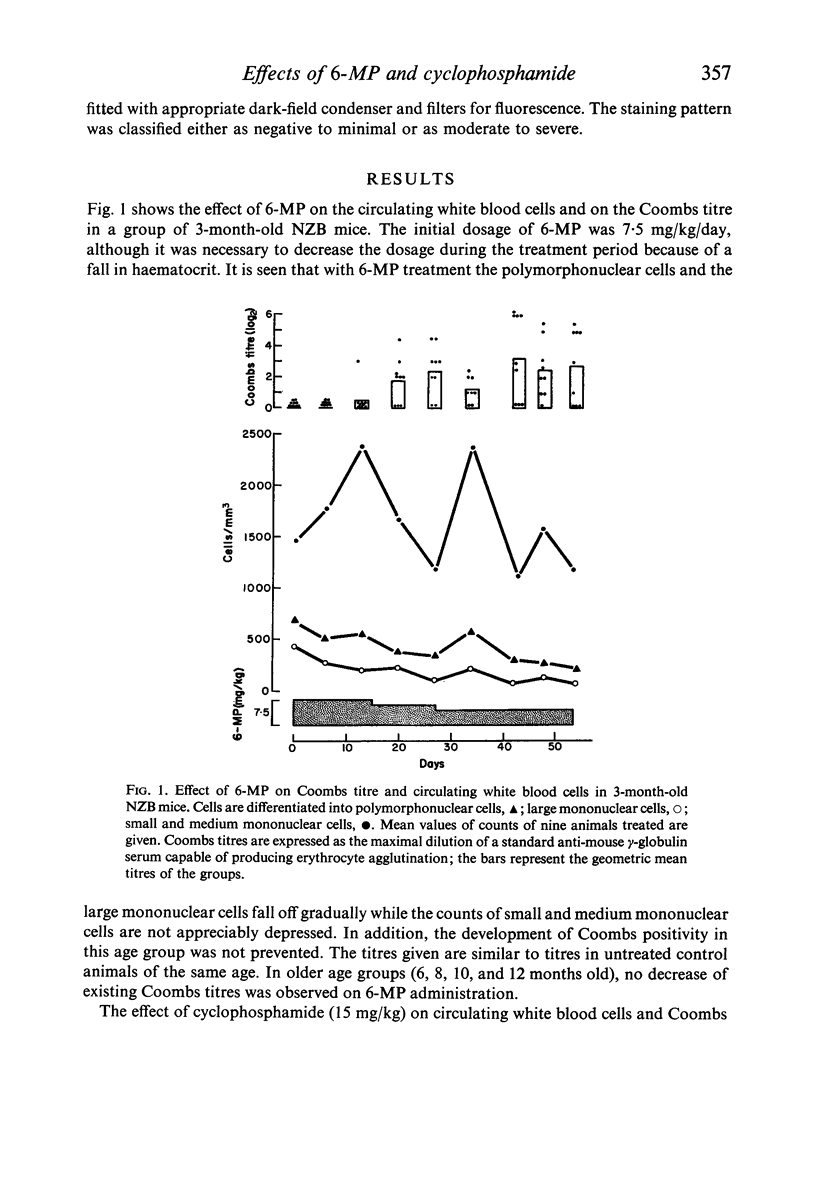
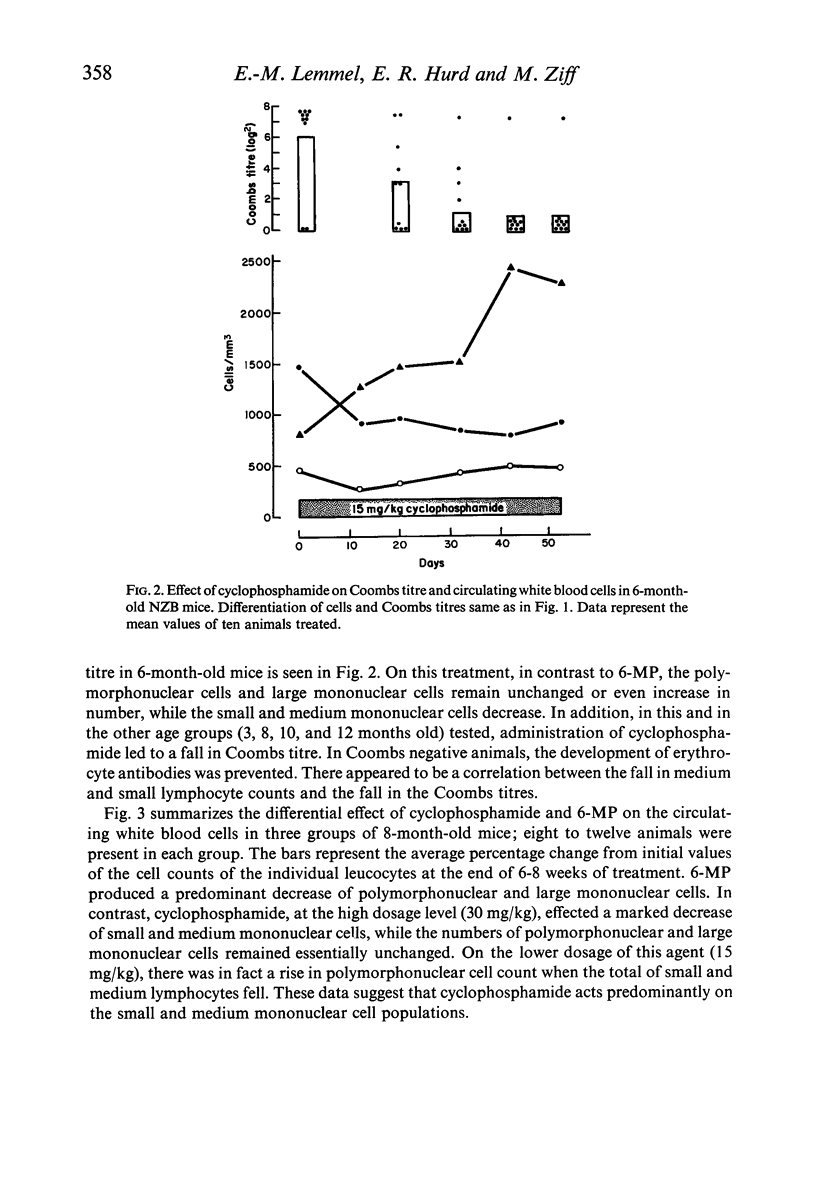
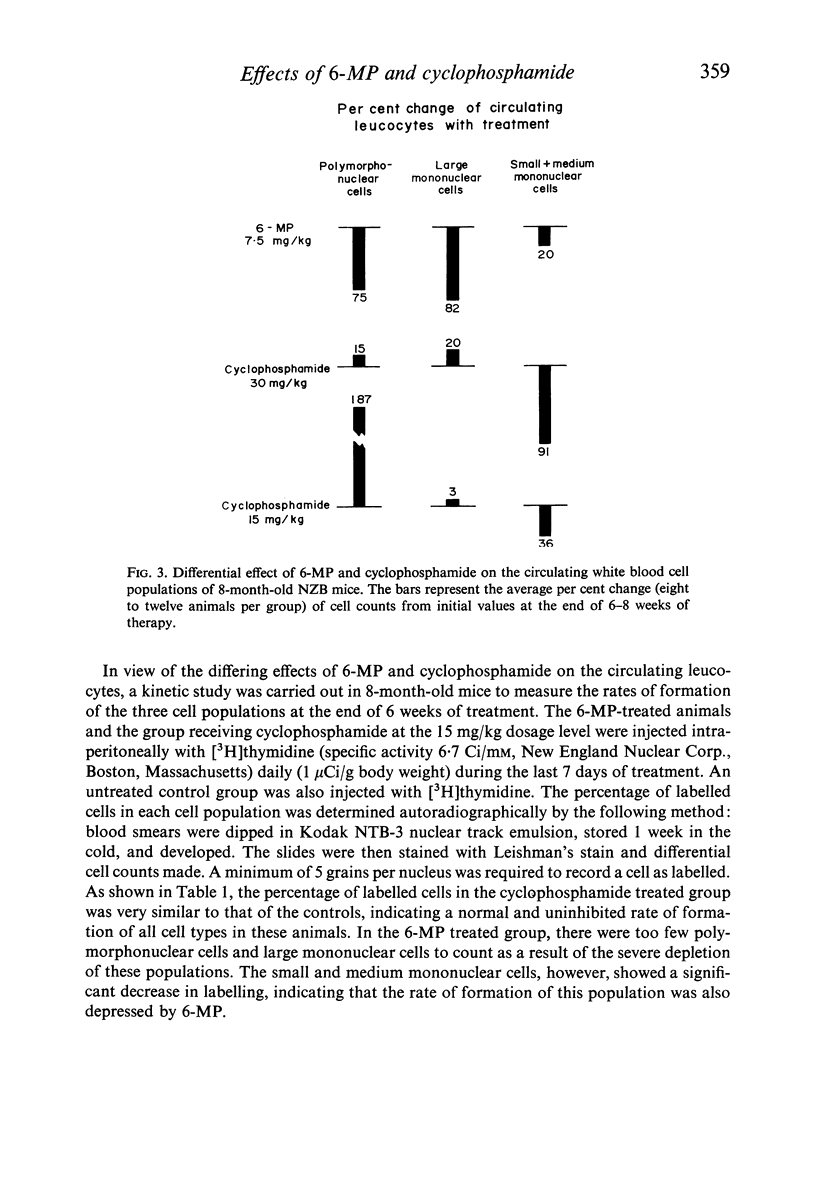
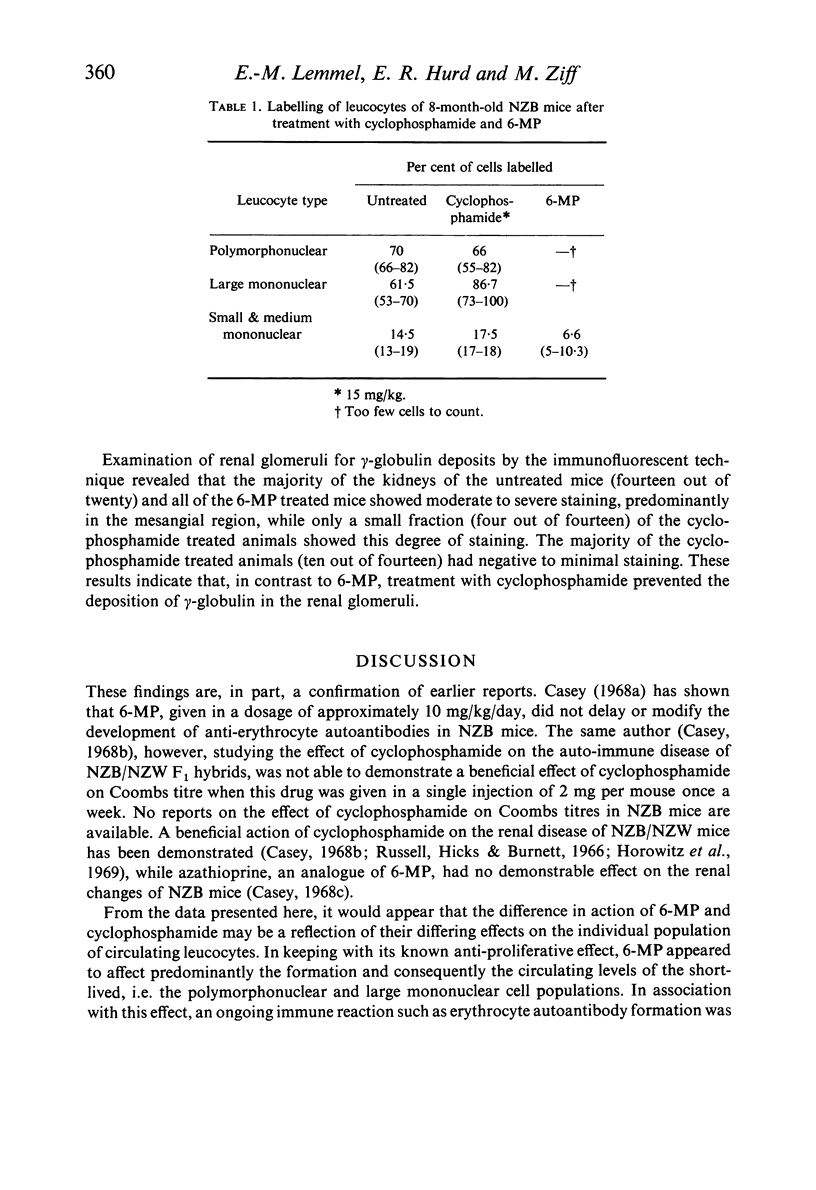


Selected References
These references are in PubMed. This may not be the complete list of references from this article.
- BURNET F. M., HOLMES M. C. Immunological function of thymus and bursa of Fabricius. Thymus lesions in an auto-immune disease of mice. Nature. 1962 Apr 14;194:146–147. doi: 10.1038/194146a0. [DOI] [PubMed] [Google Scholar]
- Casey T. P. 6-mercaptopurine administration to NZB mice. Aust J Exp Biol Med Sci. 1968 Jun;46(3):327–333. doi: 10.1038/icb.1968.26. [DOI] [PubMed] [Google Scholar]
- Casey T. P. Azathioprine (Imuran) administration and the development of malignant lymphomas in NZB mice. Clin Exp Immunol. 1968 May;3(4):305–312. [PMC free article] [PubMed] [Google Scholar]
- Casey T. P. Immunosuppression by cyclophosphamide in NZB X NZW mice with lupus nephritis. Blood. 1968 Sep;32(3):436–444. [PubMed] [Google Scholar]
- GOWANS J. L., McGREGOR D. D., COWEN D. M. Initiation of immune responses by small lymphocytes. Nature. 1962 Nov 17;196:651–655. doi: 10.1038/196651a0. [DOI] [PubMed] [Google Scholar]
- Gowans J. L., Uhr J. W. The carriage of immunological memory by small lymphocytes in the rat. J Exp Med. 1966 Nov 1;124(5):1017–1030. doi: 10.1084/jem.124.5.1017. [DOI] [PMC free article] [PubMed] [Google Scholar]
- HELYER B. J., HOWIE J. B. Spontaneous auto-immune disease in NZB/BL mice. Br J Haematol. 1963 Apr;9:119–131. doi: 10.1111/j.1365-2141.1963.tb05450.x. [DOI] [PubMed] [Google Scholar]
- HOLMES M. C., BURNET F. M. THE NATURAL HISTORY OF AUTOIMMUNE DISEASE IN NZB MICE. A COMPARISON WITH THE PATTERN OF HUMAN AUTOIMMUNE MANIFESTATIONS. Ann Intern Med. 1963 Sep;59:265–276. doi: 10.7326/0003-4819-59-3-265. [DOI] [PubMed] [Google Scholar]
- Horowitz R. E., Dubois E. L., Weiner J., Strain L. Cyclophosphamide treatment of mouse systemic lupus erythematosus. Lab Invest. 1969 Sep;21(3):199–206. [PubMed] [Google Scholar]
- Mellors R. C. Autoimmune and immunoproliferative diseases of NZB/Bl mice and hybrids. Int Rev Exp Pathol. 1966;5:217–252. [PubMed] [Google Scholar]
- Mellors R. C., Huang C. Y. Immunopathology of NZB/BL mice. V. Viruslike (filtrable) agent separable from lymphoma cells and identifiable by electron microscopy. J Exp Med. 1966 Dec 1;124(6):1031–1038. doi: 10.1084/jem.124.6.1031. [DOI] [PMC free article] [PubMed] [Google Scholar]
- de Vries M. J., Hijmans W. A deficient development of the thymic epithelium and auto-immune disease in NZB mice. J Pathol Bacteriol. 1966 Apr;91(2):487–494. doi: 10.1002/path.1700910223. [DOI] [PubMed] [Google Scholar]


